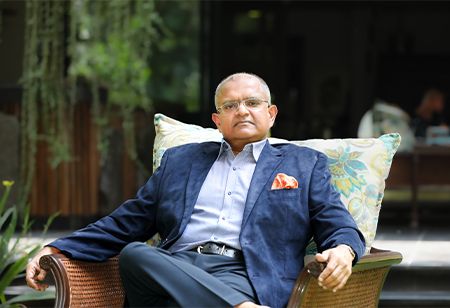
India’s residential real estate market, especially in the vicinity of the mega-cities and metros, has witnessed a noticeable shift in the last few decades. With land availability within main city municipal limits severely restricted, developers started eyeing land parcels in the periphery of these cities for affordable housing. Buyers, who were unable to afford a home in the city’s prime areas, eagerly lapped up the homes on offer in such satellite towns which offered a congestion-free life.
Over time, the growth in these satellite towns outpaced the growth in the prime areas. According to a report by real estate consultancy ANAROCK Research which came out in December 2024, price appreciation in real estate in peripheral areas was higher than that recorded in city centres over a five-year period between 2019 and 2024.
Citing the example of Bengaluru, the report said that the city’s peripheral areas like Gunjur and Devanahalli saw residential prices jump 69 percent and 49 percent respectively (2019–Q3 2024), as against 62 percent and 38 percent rise seen in areas like Thannisandra Main Road and Electronic City, respectively, in the same period.
A smooth drive
A major impediment in the development of real estate markets in peripheral areas used to be the connectivity to and from the main city. However, with the improvement in road and highway infrastructure, it’s in fact faster and easier to reach the main city from a satellite town than to commute within a main city to its Central Business District (CBD).
In Bengaluru for instance, to beat the city’s notorious traffic bottlenecks, projects such as the STRR (an 8-lane access controlled highway with service road connecting Hosur to Bengaluru’s other satellite towns and part of the Bharatmala Pariyojana), BMRCL extension, PRR and Hosur ORR, which are various stages of development, will ease the congestion and improve connectivity between the city’s peripheral areas and its CBD.
Also Read: Namma Metro 2.0 - The New Blueprint for Smart Investments
The upcoming Hosur metro line, which is an extension of the Bengaluru metro from Bommasandra to Hosur, will result in a drastic reduction in commuting time between Karnataka and Tamil Nadu. This is also expected to have a positive spillover effect on real estate development along the inter-state highways, such as Sarjapur Road, which is seeing a number of premium, luxury and bespoke real estate projects taking off.
In fact, real estate developments along and off Sarjapur Road are attracting buyers from both Bengaluru and Chennai, who are drawn not only by the gated communities that provide privacy, security, and exclusivity, but also by the relatively affordable rates when compared to similar posh areas in Chennai. The Bengaluru-Chennai Expressway is fuelling this demand by considerably cutting travel time between the two cities. Key locations along the corridor, including Malur and Kolar, are rapidly developing into lucrative real estate hotspots.
The added catalysts
One of the most appealing aspects of living in peripheral areas nowadays is the spacious, less congested environment, which contrasts significantly with the saturation of city centres. These places provide a cleaner, more breathing atmosphere while maintaining connectivity and convenience. Adding to this is the increasing number of large Special Economic Zones (SEZs) and sprawling corporate campuses on the immediate outskirts, particularly as the hybrid work paradigm gains traction.
Areas like Hosur are developing as important growth hubs. Hosur, one of India's 13 fastest-growing cities, benefits from its proximity to the expanding Electronic City and is quickly becoming a desirable location for IT businesses setting up Global Capability Centres (GCCs) and international manufacturing units along the Hosur Knowledge Corridor. The upcoming TIDEL Park, which will span 5 lakh square feet and employ over 6,600 people, would help to strengthen the region's ecosystem. This expansion adds to the region's existing robust manufacturing sector, which includes TVS Motor, Ashok Leyland, Titan Company, Delta, Tata Electronics, and Sundram Fasteners, as well as over 3,000 MSMEs.
Lifestyle and Work Trends
The Covid-19 pandemic, and the subsequent transition to work-from-home (WFH) and hybrid models, have drastically changed homebuyer preferences. The need for larger homes has increased, as today's homes are expected to function as workstations, providing privacy and dedicated areas for productivity. With the need to live close to work no longer a necessity—due to better connection via metro networks, flyovers, and public transportation—homebuyers are preferring larger, more tranquil areas over proximity to the city's commercial hubs.
This trend has inspired many people to pursue their dream homes—green places that provide cleaner air and refuge from the bustle and congestion of city life. Both millennials and families prefer to live in well-planned gated communities. These provide not only 24/7 security, but also a complete lifestyle ecosystem, including well-maintained roads, pavements, streetlights, well-maintained parks, convenience stores, medical facilities, children's play areas, and a wide spectrum of indoor and outdoor sports facilities. All of this, while remaining close to schools, workplaces, shopping malls, and multiplexes, makes such communities the preferred choice of India's emerging aspirational class and discerning HNIs.
About the Author: Prashant Kajaria, Managing Director of SPA Group is a pioneer in luxury real estate. His journey from Kolkata to Bangalore was more than just a geographical shift—it was a bold entrepreneurial leap, driven by a vision to create extraordinary living spaces that seamlessly blend luxury, sustainability, and nature.
We use cookies to ensure you get the best experience on our website. Read more...
Copyright © 2025 HomesIndiaMagazine. All Rights Reserved.